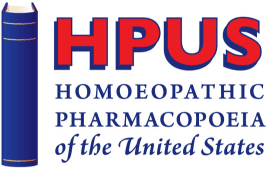Submitting a Monograph
Technical Information Requirements For Monograph Review
Approved April 2014
4. Manufacture
- Manufacturer(s)
Sponsor shall provide the name, address, and responsibility of each manufacturer, including contractors, and each production site or facility for batches of homeopathic drug product referenced in the clinical submission.
- Description of Manufacturing Process and Process Controls
Sponsor shall identify manufacturing methods and processes used to manufacture batches of the homeopathic drug product used in clinical development of the drug substance. If compendial manufacturing methods are used, these shall be referenced. If noncompendial methods or processes are used, these shall be explained and described with the same level of detail as the primary process.
- Control of Materials
It is recommended that information on the quality and control of materials used in the manufacture of the drug substance be provided and that information demonstrating the materials meet standards appropriate for their intended use should be provided, as appropriate.
For botanical raw materials, a certificate of authenticity signed by a person who is appropriately qualified shall be provided.
For botanical raw materials a macroscopic, and where applicable, a microscopic description of the plant and/or part used for clinical development against a voucher specimen shall be provided.
Sponsor shall provide a photo of the voucher specimen.
For botanical raw materials, a description of the appearance of the resulting tincture shall be provided.
For botanical raw materials, a Chromatographic and or Spectrographic fingerprint is required. For zoological and chemical raw materials, Chromatographic and or Spectrographic fingerprints shall be provided, if applicable.
All publicly available quality standards/methods for the drug substance shall be provided, if available.
It is recommended that any marker compounds used in the suggested analytical methods be described.
It is recommended that heavy metals limits for raw materials be provided and justified.
It is recommended that for Botanical and Zoological raw materials, microbial limits be provided and justified
It is recommended that residual pesticides, parent, or metabolites for botanical and zoological raw materials be identified.
It is recommended that limits for adventitious toxins (e.g. botanicals: aflatoxins) in botanical and zoological raw materials be provided.
Limits for foreign materials or adulterants shall be provided.
It is recommended that limits for total ash for botanical raw materials be provided.
Moisture content limits for chemical starting materials shall be provided.
It is recommended that moisture content limits for botanical and zoological raw materials be provided, if applicable.
Based on risk analysis, it is recommended that appropriate limits for radioactivity be provided.
For chemical raw materials, a chemical or biological quantitative assay shall be provided. For botanical & zoological raw materials, the same shall be provided, if applicable.
For zoological raw materials, a risk analysis or other evaluation of viral security shall be provided.
For zoological raw materials, a risk analysis or other evaluation of TSE security shall be provided.
When considering specifically the risk of transmission of TSE, raw and starting materials, excipients as well as reagents participating in the manufacturing process namely from bovine, ovine and caprine origin, and any other TSE susceptible species, shall comply with FDA guidelines regarding transmission of TSE.
For zoological raw materials intended for manufacturing sarcodes, a Veterinary certificate of wholesomeness shall be provided.
For any analytical procedures that are not referenced in an FDA recognized standard reference, a complete description of analytical procedures and appropriate validation data shall be provided.
A Certificate of analysis for the raw material used in clinical batches shall be provided.
